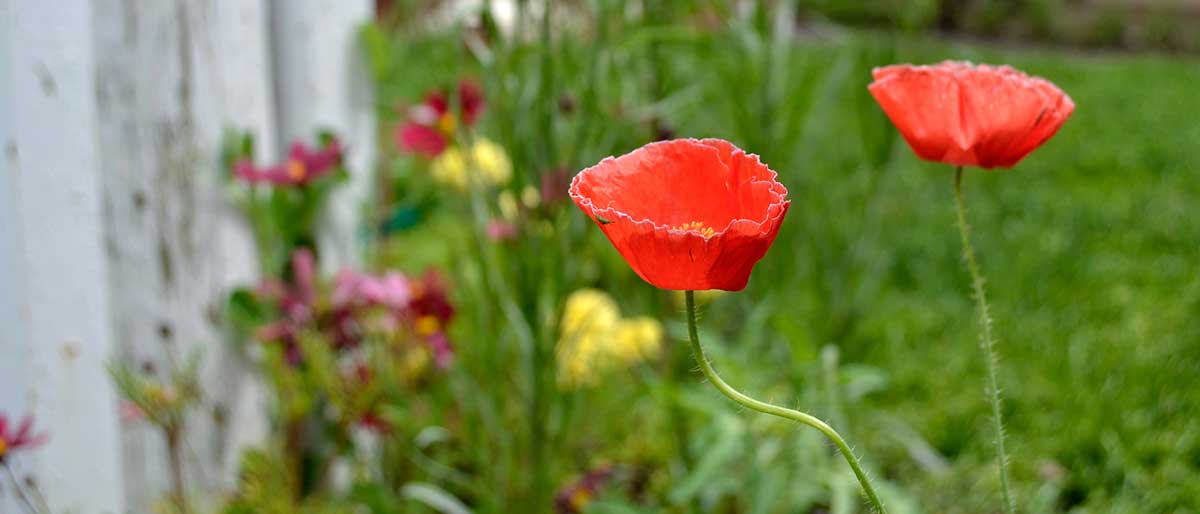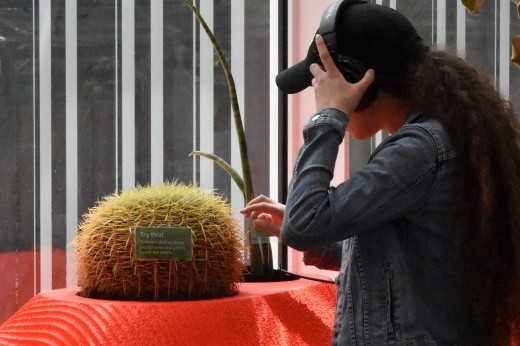Into the Garden is a new series of interviews about plants, people, and everything in between. Our first Q&A features New York–based artist Phyllis Ma, who specializes in still-life photographs of mushrooms.
Mushrooms—the fruiting bodies of fungi—aren’t plants, though for a long time they were classified under that umbrella. In fact, fungi are more closely related to humans. But they’re close associates of plants, forming symbiotic mycorrhizal connections with over 90 percent of all plant species. And they offer a reminder, as biologist Merlin Sheldrake explored in his 2020 bestseller Entangled Life, of a fundamentally interwoven world. We are, for one thing, constantly inhaling spores.
Artist Phyllis Ma released the first zine from her popular photography series “Mushrooms and Friends” in 2019, amid a blossoming (and still very much ongoing) cultural fascination with fungi. In surreal and dazzling displays, Ma transforms her subjects—many foraged from around Queens and Brooklyn—into triumphant technicolor beings, full of humor and personality.
I spoke with Ma about stinkhorn eggs, mushroom fever, and the relationships that emerge between people and mushrooms.
When did you become interested in mushrooms?
In 2019 I visited a friend’s farm, Smallhold, which grows edible mushrooms. It was the first time I realized that mushrooms could become a medium for art. When you walk into the farm, the first thing you see is this glow of blue lights, which they use to help the mushrooms grow. Then you see these blocks and blocks of substrate with different mushrooms coming out of them. It looks very extraterrestrial, and so completely unlike how plants are grown.
Before that, I was doing food photography, and I was kind of hitting a wall with how to tell more stories with it. It was exciting to utilize my food photography skills on mushrooms—it just seemed like there were endless facets to explore within mycology. You could talk about them as decomposers, as food, as medicine, as art objects.
How do you go about collecting your subjects?
I live in Queens, so I mostly go around there. And it’s pretty straightforward, I just walk around and I look for mushrooms. There’s no special trick or anything. I bring them home in Tupperware, and I usually like to take some samples and try to figure out what they are, or ask people who know a lot more than me how to identify it.
How do you decide how to arrange and style them?
Just by intuition—like, these two almost look like a mother and a baby. I like bright colors, and I use objects I could find in my house as props, but I try to keep everything as simple as possible. I have a deadline, basically, because the mushrooms are changing shape by the hour.
What happens to them?
They start shrinking, because they’re losing moisture. And it really depends on the mushroom. Some mushrooms don’t even make it home because they’re so sensitive after they’re picked. Some mushrooms are sturdier and I can keep them in the fridge. The mushrooms tell me what to do, really.
For example, I found a stinkhorn egg at Green-Wood Cemetery, and I incubated it for a few weeks at home.
And then one day, when it was rainy and the humidity was super high, it just decided to hatch. And I decided to photograph it that day.
I know you’ve been doing some historical research, too. What have you been reading about lately?
I recently wrote an article for the New York Mycological Society newsletter about the first mushroom club in New York. The research was so fascinating, because it feels like mushrooms are such a thing right now, but there have been many waves of interest in America. The first one may have been in the late 1800s. The club started out with just 14 people, and it grew in two years to over 100 people.
I think it was a very exciting time in New York, because it coincided with other things that were happening, like more women getting involved in professional realms, and the establishment of leisure clubs like the Torrey Botanical Society and the New York Mycological Society. It was also the peak of bicycle fever, and it had become possible for women to ride bicycles with skirts.
My theory is that this coincidental relationship between “bicycle fever” and “mushroom mania” created a big public interest in mushroom foraging around New York City, as well as encouraging the participation of women in the outdoors.

I've also been reading about reishi bonsai—a play on bonsai using reishi mushrooms—which is actually pretty hard to find English information about. It’s something people have been doing for a long time. And it’s a form of craft in China that I feel is kind of overlooked, or not really seen as a true art form, just because it’s done by farmers or people in villages.
I’ve been trying it out at home. One way to do it is by grafting. The other way is to harvest the mushrooms, let them dry completely, and then glue them together to make it look more organic. You can also try to sculpt it as it’s growing—you can control the light, you can control the carbon dioxide levels and humidity. And reishi is super sensitive, so it’s going to react to all those environmental conditions.
What’s the most interesting thing you’ve learned about mushrooms?
Mushrooms are a part of almost every culture in the world. You can tell a lot about each culture by how they use mushrooms, or what their customs are with foraging or cultivation. You can learn about their religious practices, or their relationship to nature.
I’ve been looking for any papers or books that discuss the history of mycology in China, and I thought the depiction of mushrooms in Daoist texts was very interesting. There’s one text, possibly from the 7th or 8th century, called “The Secret of Divine Immortals.” It’s a very fantastical, almost poetic mushroom guide.
The work is very mysterious. It offers very specific spiritual instructions, like: “After eight days, red clouds appear and after eighty days, a smoke-like red breath will emerge from and cover the site. Eventually, after one hundred days, a red mushroom will sprout.”
That almost reminds me of your work, which uses very specific, bold colors. When I look at your photos, there’s something very joyful about them. We’re in this moment of profound ecological crisis, and it seems like a lot of people find hope in mushrooms—they make life out of death, in a way. Do they give you that feeling?
Totally. In my first zine, I quote Anna Tsing [author of the 2015 book The Mushroom at the End of the World].
She writes: “We are stuck with the problem of living despite economic and ecological ruination. Neither tales of progress nor of ruin tell us how to think about collaborative survival. It is time to pay attention to mushroom picking. Not that this will save us—but it might open our imaginations.”
This really encapsulated how I felt when I started doing mushroom work.
Check out more of Ma’s work—and grab a copy of her zine—at phyllisma.com.





-(1).jpg)




